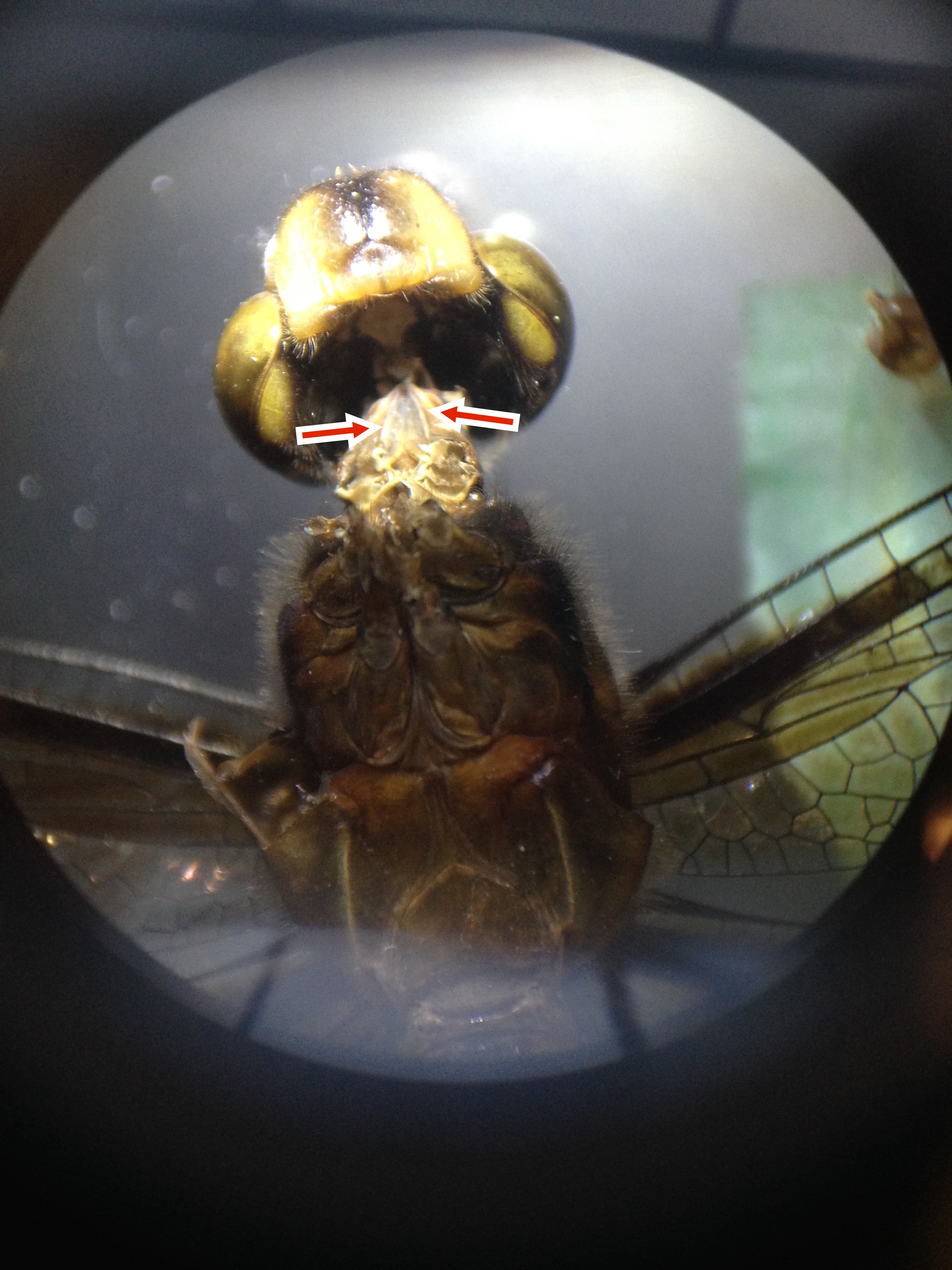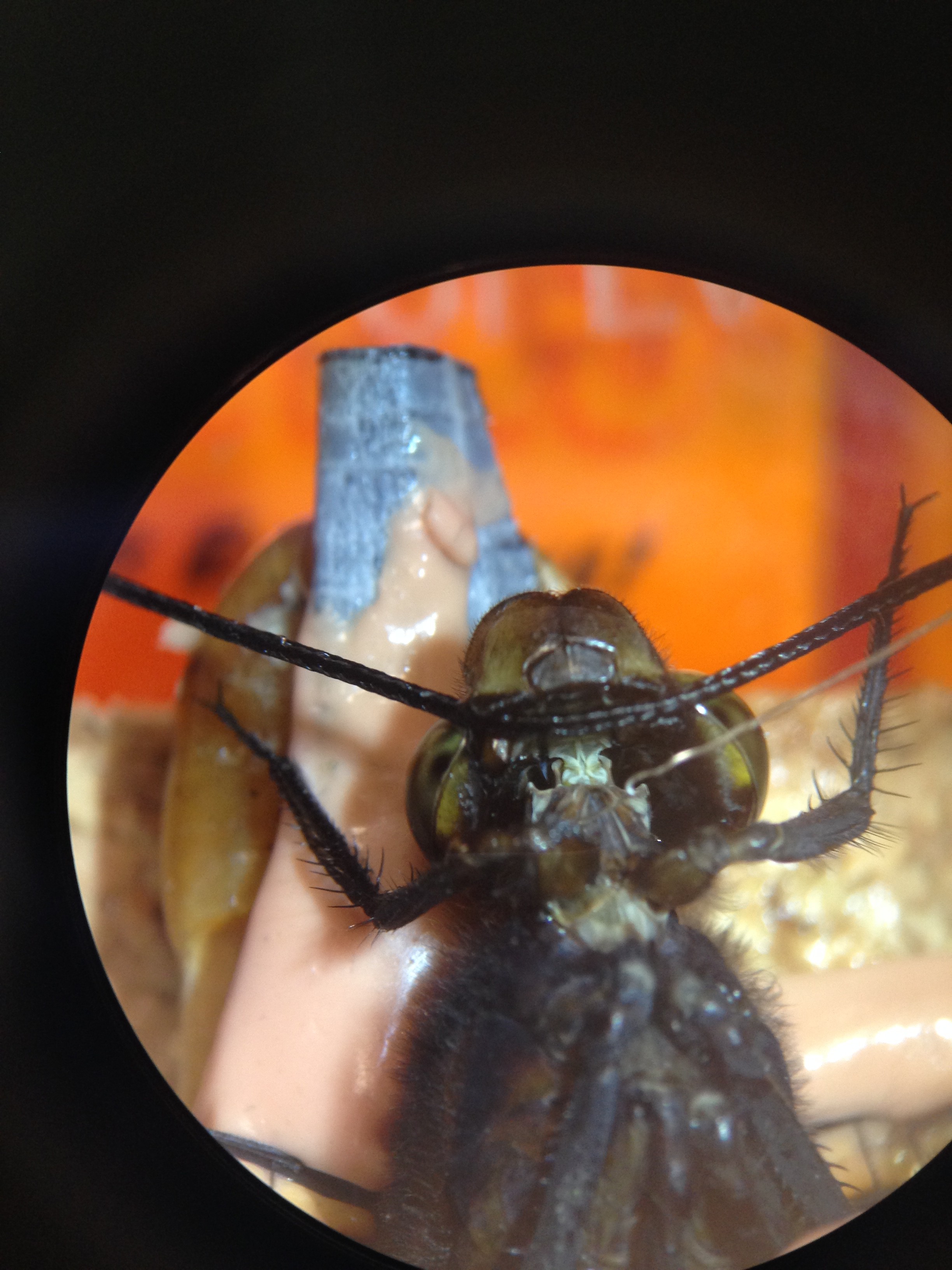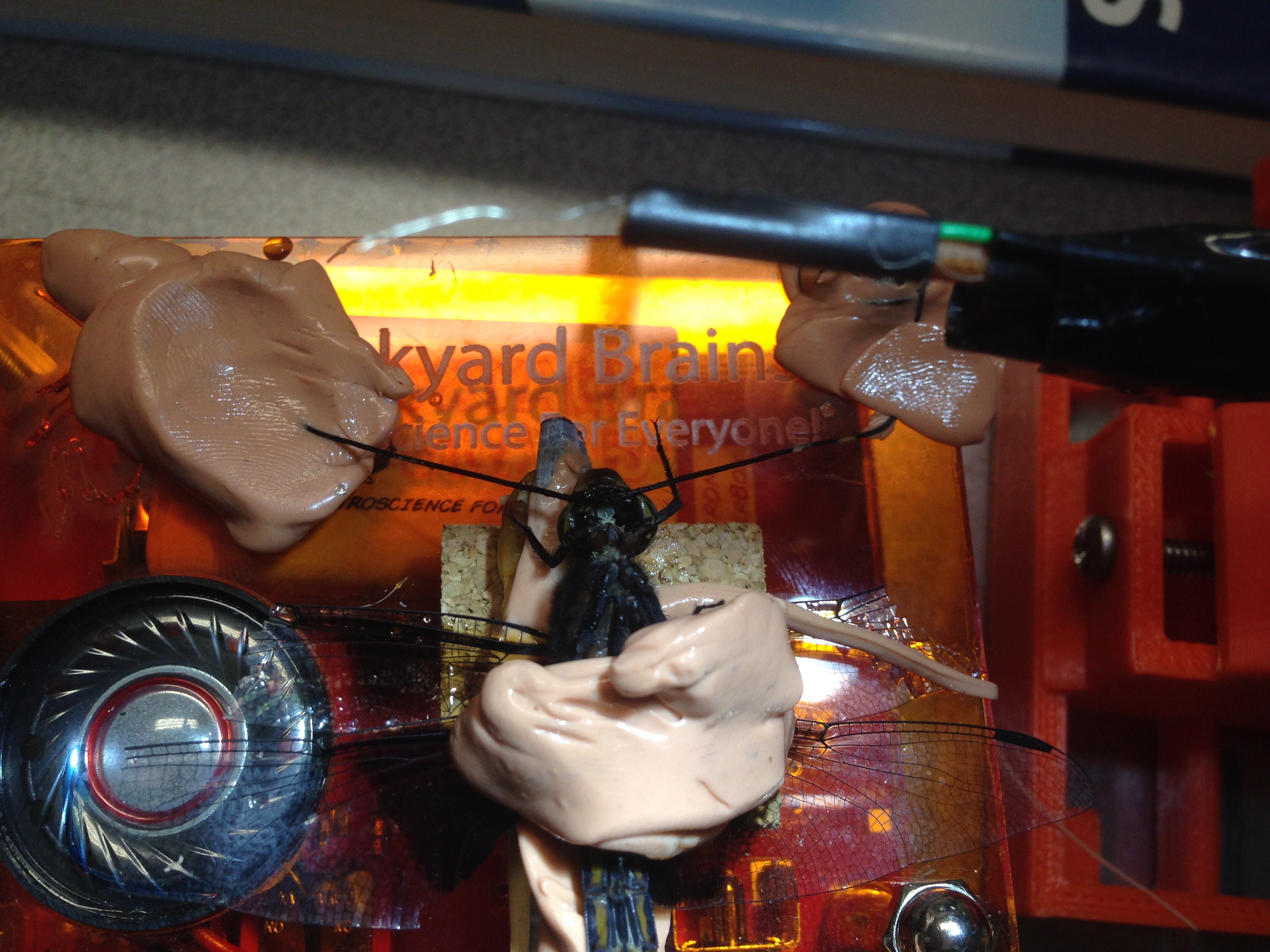Neural recordings:
Yesterday, I recorded from the neuron of the dragonfly without the lasers, just to ensure the materials are working and that I can find the TSDNs. For the neural recordings of the dragonfly, I aimed to place the electrode in the TSDN. These neurons run down the dragonfly's neck, on the right and left side, just above the thoracic ganglia. (Pictured below)
The TSDNs are the thin white lines running on both sides of the dragonfly's neck, as shown by the red arrows. I placed the electrode on the right one. As seen below, I placed a thin wire in the right TSDN.
But before I placed the electrode in I anesthetized my dragonfly (about 2 hours in a refrigerator).
Materials needed of the neural recordings:
- Spikerbox (from Backyard Brains)
- a speaker (optional) and audio cable
- one dragonfly
- insect wax (or tape)
- popsicle stick
- silly putty (or tape)
- clips, stand or clamp
- string
- electrodes
- micromanipulator (optional, you can just use free delicate wires if you have a steady hand)
- laptop, iPad, or iPhone
The finalized set up should look like this:
Make sure to set as much as you can up before you take the dragonfly out of the refrigerator, to make sure that the dragonfly does not wake up before you have the electrodes in. Once the dragonfly is anesthetized, secure the dragonfly ventral side up on a popsicle stick with insect wax and silly putty. Make sure not to touch the wings with either substance, the wings are extremely fragile! After securing the body, I used string to keep the neck exposed. While I was securing the dragonfly, it woke up so I put it in ice water (leaving the lower abdomen exposed to that it could breathe). After 15 minutes, I took it out.
After the dragonfly is secured onto the popsicle stick with his back waxed onto the stick with insect wax and his legs secured with silly putty, place the electrode in the right TSDN (as shown in above pictures) and place the ground electrode in the side of the lower abdomen. (This ground is cut off by the picture but I placed in the "tail" on the right side. I placed the electrode so that it was almost parallel to the dragonfly, not perpendicular, to cause as little damage as possible.
I placed the dragonfly on the Spikerbox (a device for measuring action potentials), and plugged in the speakers. I heard a rattling sound- the sound of action potentials firing. I waved a wooden stick around the front of the dragonfly and heard the action potentials greatly increase in frequency. The increase in frequency corresponded to the movement of the stick.
Alternatively, you can wave a piece of paper with a black dot on it. Actually, basically any movement (including laser beams) cause firing. I also placed a paper towel 'screen' around the set up to shine the laser beam (as seen in the project pictures).
 Patricia Aguiar
Patricia Aguiar


Discussions
Become a Hackaday.io Member
Create an account to leave a comment. Already have an account? Log In.